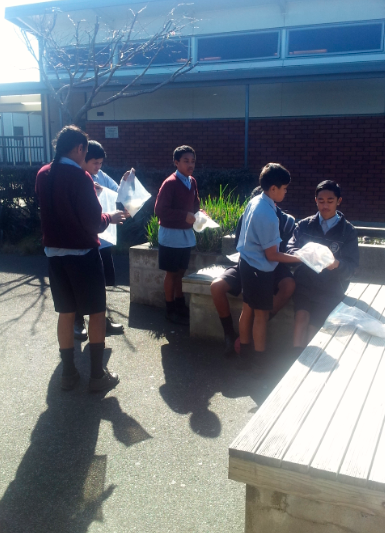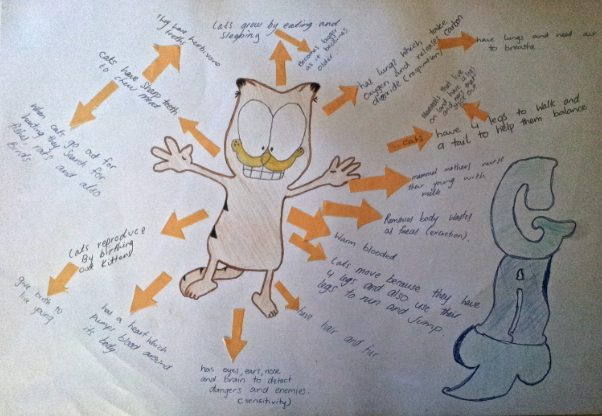All three of my Year 9 classes finished their Chemical Reactions unit on Friday, and we decided it was time for a treat for working so hard!
9PLa and 9PTt got to make ice-cream after Latiume sent me
this link and requested to make ice-cream, and 9RTd got to launch rockets with Mr Grace in their Friday class!
I was so impressed by how 9PLa and 9PTt worked together to help set up their bags of ice-cream, which you can clearly see in the photos below. The recipe for ice-cream is not difficult, and some of the students even said they would make it at home again!
Everybody helping one another with the measurements - it is difficult to do alone!
Trey helping Lasa measure the vanilla essence.
Everyone doing the measurements.
Once the two bags were all set up students had to keep shaking them to make their ice-cream creamy!
Suzie enjoying her ice-cream in the sun.
Latiume and Tyrone were pretty happy with the outcome of their effort.
Reactants for the small ziplock bag:
1/2 cup blue milk
2 tablespoons of sugar
1 teaspoon of vanilla essence
Reactants for the larger ziplock bag:
Three handfuls of ice
1/4 cup rock salt
Method:
1. Place all of the reactants for the small ziplock bag into it.
2. Make sure the small ziplock bag is COMPLETELY sealed.
3. Place all of the reactants for the larger ziplock bag into it.
4. Place the smaller ziplock bag into the larger bag.
5. Shake the larger bag from the corners, try not to touch the ice too much - it's very cold!
6. Shake until you can feel the milk has hardened into an ice-cream-like texture.
Product:
Vanilla Ice Cream
Word Equation:
milk+sugar+vanilla essence --> vanilla ice-cream
Conclusion:
The science behind this chemical reaction is that mixing ice and salt causes the ice to be able to melt into water while it is still at the temperature of ice - below 0 degrees. Try not to touch the freezing cold ice-water while shaking the bag, as it can cause second or third-degree burns similar to frostbite. The ice-cream tasted really nice, but some bags had a slight salty taste because there was some salty water sitting in the crease of the ziplock bag, which fell into the ice-cream when it was opened! 9PLa would advise you to wash the bag before opening it, while I quite enjoyed the slightly salty ice-creamy taste; kind of like salted caramel. Yum!
































